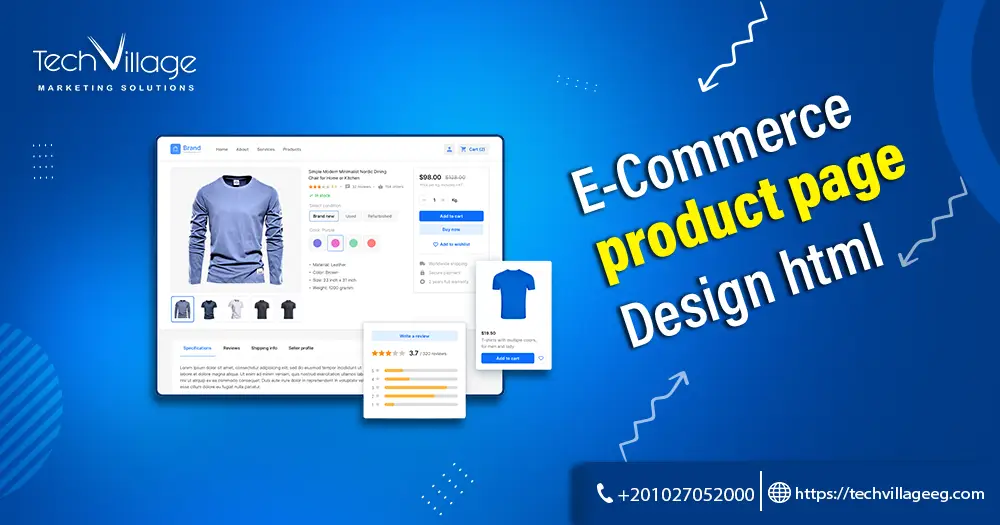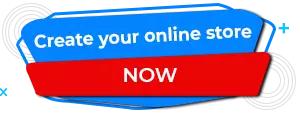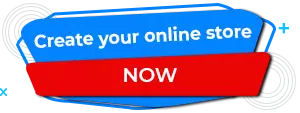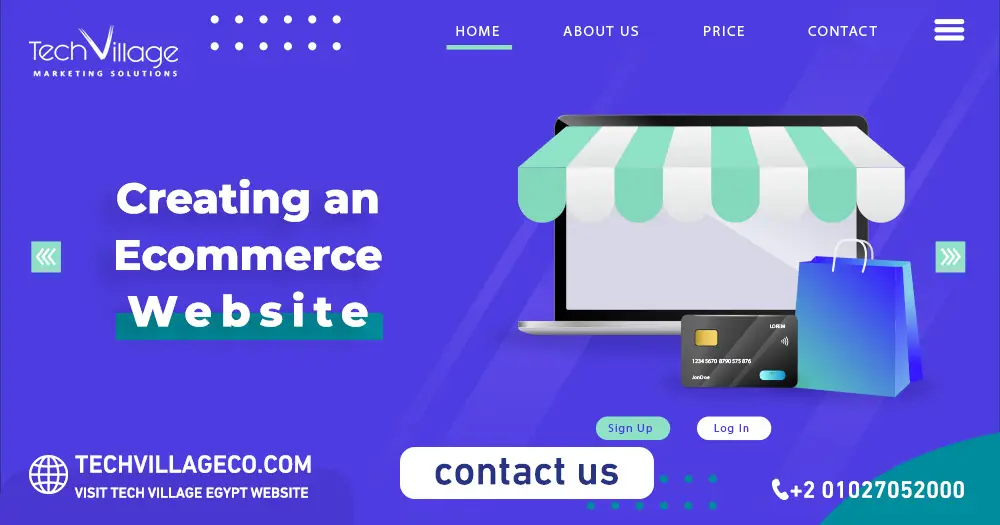Do you own products and want to sell them via the Internet by designing an ecommerce product page design html, as the Internet market is a large market that includes millions of buying and selling operations every second.
And it is an opportunity for your products to be offered for sale in front of millions of customers from all over the world, without you having to move Your goods across the border until it reaches these people only. All you have to do is seek help and request a price quote from tech village or a web design company to get the service immediately.
E-commerce is a product left by globalization until the world became involved in this electronic commerce through wires and networks of the Internet. E-commerce has become a goal that many individuals, business owners and entrepreneurs around the world seek to work on and study.
So you must search and investigate ways to exploit electronic commerce in order to become one of the pioneers of this field on the Internet. Therefore we will discuss How To design an ecommerce product page design html.
Table of Contents
Toggleecommerce product page design html
An ecommerce product page design html is a critical component of any online store as it serves as the primary point of interaction between customers and the products or services being offered. The design of an ecommerce product page design html plays a crucial role in attracting potential buyers, providing essential product information, and ultimately influencing their purchasing decisions.
HTML (Hypertext Markup Language) is the fundamental building block of web pages, and it is the primary language used to create the structure and content of an eCommerce product page. By using HTML, web developers can define the layout, text, images, and various elements necessary to present product details to visitors.
Basic Folder Structure to start this project
Designing an ecommerce product page design html for your store is very important, so that you can display your products, and according to tech village, a well-designed eCommerce product page should achieve several objectives:
1-Clear Product Information: The page must present concise and clear details about the product, including its name, price, description, specifications, and availability.
2-High-Quality Product Images: Visuals are essential in ecommerce product page design html. Including high-resolution images of the product from different angles helps customers get a better understanding of what they are considering to purchase.
3-Intuitive User Interface: The ecommerce product page design html should be user-friendly, making it easy for visitors to navigate and find the information they are looking for. The placement of elements like “Add to Cart” buttons and quantity selectors should be intuitive.
4-Responsive Design: As users access websites from various devices, including desktops, laptops, tablets, and smartphones, the ecommerce product page design html must adapt to different screen sizes and resolutions. This ensures a consistent and enjoyable user experience across devices.
5-Product Reviews and Ratings: Including customer reviews and ratings can build trust and provide social proof, influencing potential buyers’ decisions.
6-Call to Action (CTA): Strategically placed CTA buttons encourage users to take action, such as adding the product to their cart or proceeding to the checkout.
7-Security and Trust Indicators: Displaying trust badges, secure payment icons, and SSL certificates can help instill confidence in customers regarding the safety of their transactions.
8-Related Products: Recommending related or similar products can lead to cross-selling and upselling opportunities.
9-Performance Optimization: Ensuring fast loading times and smooth interactions is important for reducing bounce rates and improving conversions in ecommerce product page design html.
read also: Best Shopify Ecommerce Websites.
Steps to create a Single ecommerce Product Page design using Pure CSS and Vanilla Javascript
Most of the time, building your online store page depends, to a large extent, on JavaScript and CSS. So below is a step-by-step guide to help you build the ecommerce product page design html using JavaScript and CSS:
Step 1: Set Up the HTML Structure
Start by creating the basic HTML structure for the ecommerce product page design html. Make sure to include placeholders for product images, name, price, description, quantity selector, and an “Add to Cart” button.
Step 2: Style the Page Using CSS
Create a separate styles.css file to style the product page. Define the layout, colors, typography, and other visual elements to make the page visually appealing.
Step 3: Add Product Data Dynamically Using JavaScript
Create a separate script.js file to handle dynamic content on the ecommerce product page design html. You can use JavaScript to fetch product data from a backend or create a dummy data object for demonstration purposes.
Step 4: Load the Page and Test
You should see the product page with the product information and the “Add to Cart” button. Ensure that the product image and details are displayed correctly, and clicking the “Add to Cart” button triggers the appropriate event (in this case, it displays an alert).
Note: With these steps, you’ve successfully created a single ecommerce product page design html using pure CSS and Vanilla JavaScript. Remember that this is a simplified example, and in a real-world scenario, you would integrate the page with a backend system to handle product data, cart management, and other eCommerce functionalities.
Here’s: The Important Of Homepage For Ecommerce Website.
responsive product page html, css
To create a responsive ecommerce product page design html using HTML and CSS, you’ll need to follow some best practices, such as:
- HTML Structure: Create the basic structure of the ecommerce product page design html using HTML. Include sections for the product image, title, description, price, and any other relevant details.
- CSS Styling: Apply CSS styles to the HTML elements to define the layout, colors, fonts, and spacing of the page.
- Media Queries: Use media queries in CSS to make the page responsive. This will ensure the layout adapts to different screen sizes (e.g., mobile, tablet, desktop).
- Flexbox/Grid: Use CSS Flexbox or Grid to create a flexible and responsive layout that adjusts based on the available screen space.
- Mobile-First Approach: Design the ecommerce product page design html with a mobile-first approach, ensuring it looks good on smaller screens first and then progressively enhance it for larger screens.
- Images: Optimize images for different resolutions and screen sizes to improve loading times and overall user experience.
- Testing: Thoroughly test the ecommerce product page design html on different devices and browsers to ensure it displays correctly and is user-friendly across various platforms.
Conclusion
In conclusion, building your ecommerce product page design html is very necessary to display your store’s products in an easy and clear way that makes it easy to reach the audience. On the contrary, despite the integration of the html language, in reality you will need some other languages, such as JavaScript and CSS.
FAQ
Is building an ecommerce product page design html necessary?
Of course, building an ecommerce product page design html is very important, as this page helps you display your products in an easy way, as well as adding a description for each product, so that you can reach your target audience.
Is HTML and CSS enough to create a ecommerce website?
HTML and CSS are essential building blocks for creating the front-end of an eCommerce website. However, to create a fully functional and complete eCommerce website, you will need more than just HTML and CSS.

 AR
AR





